The feasts of the Bible are also called “מועדי יהוה” – “Moedei Adonai” – “The Appointed Times of the LORD.” God has established appointed times which have historical, agricultural, national, spiritual, and prophetic significance (Lev. 23). The “Appointed Times of the LORD” were given to the nation of Israel with the intent of Israel being a light to the nations and to reveal God’s ultimate plans for all of mankind.
This week we celebrate the first of “The Appointed Times of the LORD,” the Feast of Passover (The Sabbath is actually the first Appointed Time, however, since the Sabbath is weekly we recognize Passover as the first festival of the biblical year). The Passover celebration is filled with rich meaning and signs of the Messiah. Each year that I celebrate Passover I discover new insights that point to the Messiah and confirm that Yeshua truly was the final Passover Lamb (1 Corinthians 5:7). In this article I will focus on one main aspect of the Passover which has a clear connection to Yeshua as the Messiah.
Watch this video for a brief overview of this article
The Feast of Passover
Passover is the Feasts of Feasts for the Jewish people. The Feast of Passover is the festival that was used to define the Israelites as a nation and it was instituted to continually remind the Jewish people of what the LORD did for us:
Now this day will be a memorial to you, and you shall celebrate it as a feast to the LORD; throughout your generations you are to celebrate it as a permanent ordinance… “And when your children say to you, ‘What does this rite mean to you?’ you shall say, ‘It is a Passover sacrifice to the LORD who passed over the houses of the sons of Israel in Egypt when He smote the Egyptians, but spared our homes.’” And the people bowed low and worshiped. – Ex. 12:14,26-27
The LORD provided redemption from death for the Israelites as well as freedom from slavery through the final act of “פסח” – “Pesach,” the act of passing over the homes, which had the blood of the lamb applied to the sides and tops of the door frame (Exodus 12:1-13). For the Egyptians it was a day of judgement, tragedy, and loss but for the Israelites it was a day of redemption, life, and freedom. This is the story of Passover.
The Observance of Passover
After 3,500 years, the celebration of Passover continues as the Jewish people around the world will once again observe the Festival of Passover on the evening of March 30th, 2018. The biblical command for celebrating the Passover involves three main culinary actions (Ex. 12:8):
- Eating of the Passover lamb
- Eating of unleavened bread
- Eating of bitter herbs
Since there is no Temple standing in Jerusalem, it is not possible to sacrifice the Passover lamb. As a result of this, only eating of bitter herbs and unleavened bread are fulfilled each year at Passover. To read more about the significance of the Passover lamb, click this link: God’s Sacrifice It is important to note that although all three of these foods were to be eaten at the first Passover, it is only the Passover lamb and unleavened bread which are repeated as part of the yearly observance of Passover throughout the Torah.
The Feast of Unleavened Bread
The Feast of Passover is identified in the Bible as Passover but it is also called The Feast of Unleavened Bread:
These are the appointed times of the LORD, holy convocations which you shall proclaim at the times appointed for them. In the first month, on the fourteenth day of the month at twilight is the LORD’s Passover. Then on the fifteenth day of the same month there is the Feast of Unleavened Bread to the LORD; for seven days you shall eat unleavened bread. – Lev. 23:4-6
Because of the overlap of Passover and The Feast of Unleavened Bread, both names are associated with this seven-day feast (Ex. 23:15. Num. 28:16-25).
The name “The Feast of Unleavened Bread” in Hebrew is “חג המצות” – “Chag HaMatzot” – “The Feast of Matzot.” The Hebrew word “מצה” – “matza” means flat bread or unleavened bread and the word “מצות” – “matzot” is just the plural form of “matza.” Since there is no longer a Passover sacrifice, matza bread has taken center stage for this yearly festival. The majority of the preparations for Passover and the main activities of keeping the yearly observance of Passover focus almost entirely on “matza,” unleavened bread. In traditional Judaism matza is called “the bread of affliction,” “the bread of faith,” and “the bread of healing!”
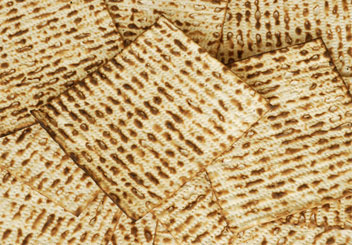
What is the Significance of Matza?
The command to eat matza during the week of Passover also demands that no leavened items be found in one’s home. It is both a positive and negative command:
You shall also observe the Feast of Unleavened Bread, for on this very day I brought your hosts out of the land of Egypt; therefore you shall observe this day throughout your generations as a permanent ordinance. In the first month, on the fourteenth day of the month at evening, you shall eat unleavened bread, until the twenty-first day of the month at evening. Seven days there shall be no leaven found in your houses; for whoever eats what is leavened, that person shall be cut off from the congregation of Israel, whether he is an alien or a native of the land. You shall not eat anything leavened; in all your dwellings you shall eat unleavened bread. – Ex. 12:17-20
This command concerning eating of matza and having a home completely free from leaven was not just a nice suggestion, it is a command of God. The punishment for eating leavened items during the week of the festival is to be cut off from the people of Israel.
Removal of All Leaven
The command to have one’s home completely free from leaven, “חמץ” – “chametz,” is a serious issue to God for His people and it is taken extremely seriously today in Jewish culture and religion. From the day after the Sabbath before Passover leading up to the day of Passover, great care is taken to rid one’s home from any trace of leaven. This not only includes getting rid of all leavened items but it also includes completely cleaning one’s home from top to bottom to ensure that no trace of leaven, including a crumb of bread, is hidden in any corner of the home.
The Search for Leaven
On the evening before the first day of Passover, meaning about 24 hours before Passover begins, there is a ceremony called “בדיקת חמץ” – “bedikat chametz,” which means “a search for leaven.” During this ceremony one of the members of the household goes around from room to room with a candle to search for any trace of leaven. Generally there are leavened items which are placed throughout the home so that they can be found. The home should otherwise be free from all other leavened items by this time. The leavened items which are found during the search are gathered up and placed in a paper bag. These leavened items are then burned the following morning at some point before noon. Passover will then begin that very evening.
In preparation for Passover, many Jewish families will use a completely separate set of plates, bowls, silverware, and cups that are used just for Passover. Once a year this set of dishes and utensils is brought out for the sole purpose of using them for the one week of the Feast of Unleavened Bread. It is a safeguard incase any speck of leaven is possibly left on any of the regular dishes or utensils.
“Kashering” – Making Kosher
There is a way of using one’s regular dishes for Passover and that is by going through a process of “kashering” dishes. The process of “kashering” (to make something kosher) is a process which is directed by the rabbis. There are various methods which include burning with fire or immersing in boiling water. For the common person who doesn’t have the means to buy and maintain a complete second set of dishes for Passover, “kashering” is an economical way of purifying one’s dishes and utensils, year after year.
Watch this video to see how dishes and utensils are Kashered today!
Passover Observed
Once all of the preparations have been made and one’s home is completely “free from leaven,” one is ready to observe the festival of Passover with a clear conscience. Passover begins on the evening of the 15th of the Hebrew month Nisan. On this evening there is an elaborate ceremony called the Passover Seder which generally lasts 3-5 hours. It is a time of remembrance and celebration that is accentuated by the foods which are eaten. Matza is the king of foods at Passover!
The Afikoman
One of the ways that matza is elevated during the Passover Seder is by the use of a special three-tiered matza bag called a “matza tash.” Three separate whole matzot are placed into this three-tiered bag, with each piece of matza being placed in its own separate compartment. At the beginning of the seder the middle piece of matza is taken out, broken into two halves, and only the smaller of the two halves is returned to the middle compartment of the bag. The larger half of matza is then wrapped in a separate cloth and hidden away until the end of the seder. This larger half is called the “afikoman.”
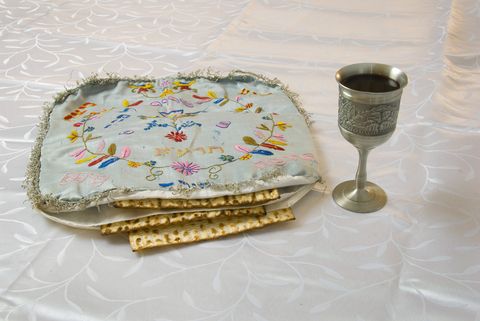
Throughout the seder there is a retelling of the story of the Exodus and matza is eaten throughout the evening, including the two and a half pieces which are left in the matza tash. The afikoman, the larger half of the middle matza, is the very last food which is eaten at Passover. The reason that the afikoman is saved to last is explained by Rabbi Lau, the former Chief Rabbi of Israel:
Today, when we have neither the Temple nor the Paschal sacrifice, we have only one Torah commandment in regard to eating, and that is to eat matza. We therefore make sure that the last thing that we eat will be matza, so that its taste can remain with us after the meal. – Rabbi Israel Meir Lau. Practical Judaism. Modan Publishing, 1997. p. 309
Matza takes center stage during the Passover Seder and it is given preeminence in the form of the afikoman by being the very last food which is eaten.
The afikoman is a mysterious entity in the Passover Seder. It is eaten towards the end of the meal in a section of the Haggadah called the “צפון” – “tzafon” which means “hidden” in this context. The name afikoman has two derivatives. The first derivative is that it is a Greek word meaning “dessert” or “that which comes after.” The second derivative is that it comes from two Aramaic words “afiku-kaman” and means “that which is removed from before us,” which also refers to taking away of the main food to prepare the way for the dessert, or “that which comes after.” So the afikoman is the matza which comes at the end of the Passover Seder, however, there is another detail that is important as well.
The Hidden Meaning of the Afikoman
Rabbi Lau has already informed us of the importance of the command to eat matza during the Passover Seder since it is the only relevant command that is able to be fulfilled, however, another rabbi adds further insight that can help us understand the significance of this piece of matza:
The afikoman, or last food, is a piece of matzah. This piece of matzah is designed to be a reminder of the Paschal sacrifice and is the taste with which we leave the seder. – Rabbi Revuen P. Bulka. The Haggadah for Passover. Machon Pri Ha’Aretz Publishing, 1985. p. 24
The afikoman acts as the Passover lamb which was to be sacrificed and eaten during the Passover Seder. As we allow the taste of this last piece of matza to linger on our taste buds we are to remember the great redemption that God provided for our people at the first Passover by the sacrifice of the lamb.
The Messianic Connection
It was no coincidence that Yeshua took a piece of matza after the meal with his disciples and used this piece of matza as the symbol for His own body:
While they were eating, Yeshua took some bread, and after a blessing, He broke it and gave it to the disciples, and said, “Take, eat; this is My body.” – Matt. 26:26
We can assume that this was at the end of the meal because it was shortly after eating this matza that Yeshua and His disciples concluded the Passover Seder and went out to the Mount of Olives (Matt. 26:30).
It makes perfect sense for Yeshua to have used this last piece of matza to symbolize His body. Yeshua was communicating to His disciples that His body was to become the Passover lamb to be sacrificed. Even though Yeshua celebrated the first day of Passover with His disciples, I believe that Yeshua literally became the Passover lamb for the second day of Passover, according to Jewish tradition. To read more about the second day of Passover, I recommend reading the following article: How Many Days and Nights was Yeshua in the Grave?
The New Covenant
It was immediately after Yeshua gave His disciples the last piece of matza that He used the third cup of wine to institute the New Covenant:
And when He had taken a cup and given thanks, He gave it to them, saying, “Drink from it, all of you; for this is My blood of the covenant, which is poured out for many for forgiveness of sins. – Matt. 26:27-28
The cup of wine which follows the eating of the afikoman is the traditional third cup of wine, called “The Cup of Redemption.” Yeshua used the customs and traditions of Passover to illustrate His death and to institute the New Covenant by His blood. This establishing of the New Covenant was prophesied by the prophet Jeremiah (Jer. 31:31).
There are so many details about the Passover that prophetically validate everything that Yeshua did by becoming the Passover Lamb. In this article I’ve focused almost entirely on the significance of matza and the afikoman. There are so many more details that connect to Yeshua being the Messiah but time and space don’t allow for this here. I will, however, end with one story related to the middle piece of matza and the afikoman.
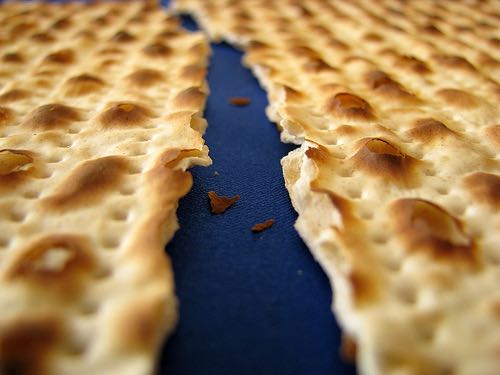
Matza and The Messiah
One year at Passover I celebrated the Passover Seder with an orthodox Jewish family in the Old City of Jerusalem. When we came to the part of the seder towards the beginning of the celebration when the middle piece of matza is taken out of the matza bag and broken into two halves, the father of the home put the smaller piece back into the bag and began to wrap the larger piece, the afikoman. It was at this point that his wife began to cry. Her husband and their sons began to ask why she was crying. I was also curious to know the reason for her tears. Her response was as follows:
We know that this piece of matza represents the Messiah and that He is hidden from us for a time. We don’t know when the Messiah will come. What will happen to us if we die before He comes?
I couldn’t believe my ears. My heart broke for her but at the same time I was reminded about how clearly the signs of Passover speak about the Messiah and relate to Yeshua.
Matza is unleavened bread and it is pierced through so as to keep it from being elevated during the baking process. It is this very bread that Yeshua used to speak of His own body. Yeshua, being the Son of God, is holy and without sin. His life is represented by this pure matza bread that has no leaven. Yeshua is the Messiah and became the Passover Lamb. He was also pierced by the nails in His hands and feet when He was crucified. Everything about Yeshua’s life and death correspond to His being the Passover Lamb, which today is represented by a simple piece of unleavened bread.
It is amazing to realize that the afikoman came to represent the sacrificial Passover lamb after the destruction of the Second Temple in 70 AD. This would seem to mean that the very tradition that Yeshua Himself started with His disciples at the Last Supper was somehow adopted by the rabbis and orthodox Judaism. The other possibility is that the eating of the afikoman started during the Babylonian exile, however, the Greek origins of the word “afikoman” seem to confirm its New Testament beginnings.
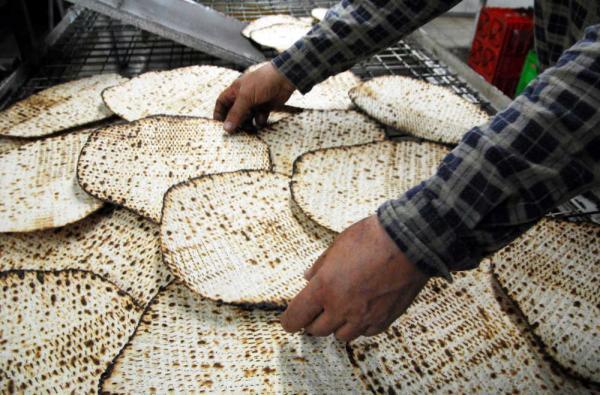
Living a “Matza” (Unleavened) Life
Yeshua clearly communicated to His disciples, and He is still communicating to us today, that He became the final Passover Lamb to redeem us from the slavery of our sin. His body was broken for us and His blood was poured out for us. By eating the afikoman at Passover we have the opportunity to meditate on the truth that Yeshua became that final Passover Lamb.
Out of honor to the One who redeemed us from the penalty of sin with His sinless body, we should make every effort to live a life of holiness, cleaning out the secret sins that we often hide in the corners of our hearts. I believe that this is what is being communicated in the New Testament Scriptures:
Clean out the old leaven so that you may be a new lump, just as you are in fact unleavened. For Christ our Passover also has been sacrificed. Therefore let us celebrate the feast, not with old leaven, nor with the leaven of malice and wickedness, but with the unleavened bread of sincerity and truth. – 1 Corinthians 5:6-8
It is always easier to fulfill outward, physical commands like cleaning out the leavened items from one’s home. The more challenging aspect to this command is the spiritual intent, to clean out the sin which so often invades our lives. During this Passover season, when we remember again the death and resurrection of Yeshua, I invite you to take time to sit before the presence of the Lord and ask Him to reveal any hidden leaven that may be distracting you from walking in holiness. Let us celebrate the Feast of Passover in the sincerity and truth of Yeshua the Messiah!
Shabbat Shalom & A Blessed Passover!
If you enjoyed reading this article, share it today with friends! We also invite you to sign up for our weekly Torah Portion commentary on the sidebar to the right.
Help keep our weekly commentaries free and available to all. Click here to donate today:
Torah Portion: Ex. 12:21 – Ex. 12:51. Num. 28:16-25
Hafatara for Passover: Joshua 5:2 – Joshua 6:1
Return to Torah Portion Homepage
Copyright Jewels of Judaism. All rights reserved 2018

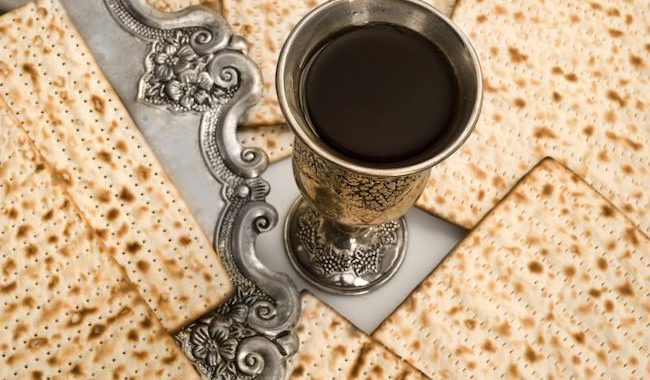

I was also shocked and heartbroken when I read your experience of having Passover Seder with the Orthodox Jewish family. May they know that their Messiah has come and is coming back soon!
Amen!